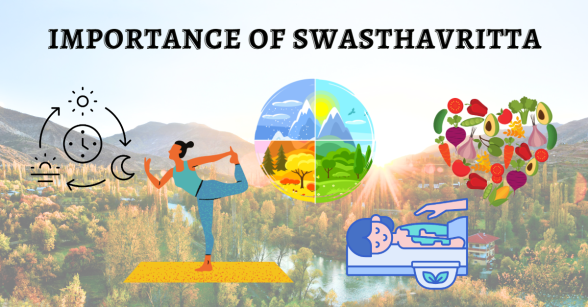Swasthavritta vs. Polypharmacy: Why Less Medicine Is the Future of True Healing From Ayurvedic Wisdom to Public Health Revolution – The Call to Live, Not Just Prescribe
- Dr Rakesh VG
- Aug 2
- 3 min read
By Dr Rakesh Ayureshmi, Ayureshmi Ayurveda Wellness Centre, Kollam, Kerala, India
Are We Healing or Harming?
Why an Ancient Science Is Warning Us Against the Modern Habit of Too Many Pills
In today’s fast-paced, symptom-obsessed healthcare system, a quiet crisis is unfolding. Patients are consuming more medicines than ever—Ayurvedic or allopathic—without deeper healing. Polypharmacy is no longer limited to modern drugs; it has crept into Ayurveda too. Meanwhile, the ancient science of Swasthavritta—Ayurveda’s lifestyle medicine—remains underutilized, often dismissed as “basic” or “non-clinical.”
But what if Swasthavritta, not medicine, is the real medicine?
What if our obsession with formulations is burying the core of Ayurveda itself?
The Crisis of Overmedication: An Ayurvedic Paradox
Polypharmacy—the simultaneous use of multiple medications—is a documented global problem. A 2022 WHO report highlights its dangers: drug interactions, dependency, increased side effects, and spiraling healthcare costs.
But Ayurveda, too, is not immune.
Many practitioners prescribe multiple classical and proprietary formulations simultaneously, with overlapping ingredients, preservatives, and contradictory actions. This violates the Ayurvedic principle of Yukti (rational discretion) and overloads the liver, gut, and metabolism—ironically worsening Agni and Ama.
“More drugs do not mean more healing. Ayurveda was never meant to be polypharmaceutical.”
The original Ayurvedic texts—Charaka Samhita and Sushruta Samhita—emphasize Swasthasya Swasthya Rakshanam (preserving the health of the healthy) before disease management. And yet, this principle is sidelined in today’s race for disease-centric care.
Swasthavritta: The Lifestyle Revolution Hidden in Plain Sight
Swasthavritta is Ayurveda’s preventive medicine system, encompassing:
Dinacharya (daily routine)
Ritucharya (seasonal regimen)
Aahara Vidhi (rules of mindful eating)
Sadvrtta (ethical living and social behavior)
Yoga and Dhyana (mind-body balance)
This is not mere wellness fluff—it is the foundational layer of disease prevention and health promotion. Just like public health protocols in modern systems, Swasthavritta is designed to minimize the need for medicine.
A 2020 study in the Journal of Ayurveda and Integrative Medicine demonstrated that following Dinacharya and Ritucharya reduced the recurrence of chronic conditions like allergic rhinitis and IBS by up to 60%.
This is Ayurveda functioning not as a curative science, but as a way of life.
The Problem with Pill-Centric Ayurveda
Over-prescription in Ayurveda creates several risks:
1. Toxic Load from Preservatives: Most over-the-counter churnas, asavas, and proprietary products are preserved for shelf life using chemicals like sodium benzoate or potassium sorbate, which can accumulate in the body when used chronically.
2. Agni and Ama Aggravation: When the Agni (digestive fire) is weak, multiple formulations add to metabolic overload, worsening the very Ama (toxins) they aim to remove.
3. Loss of Clinical Individualization: Classical Ayurveda emphasizes tailoring to Prakriti (constitution), Desha (geography), and Bala (strength). Polypharmacy erases this subtlety in favor of broad-spectrum shotgun approaches.
4. Patient Dependency: Just like in allopathy, many patients begin to believe their health lies in taking 5–6 herbal pills daily, not in how they live.
“Medicine is for when the body fails. But lifestyle is for ensuring the body never fails.”
— Acharya Charaka, paraphrased
Return to the Roots: Swasthavritta as Primary Health Care
Swasthavritta is more than prevention—it is transformation.
By aligning body rhythms with nature, it offers resilience at the cellular and systemic levels. A consistent Dinacharya with Abhyanga (self-oil massage), Nasya, regular bowel habits, proper sleep, and spiritual practices acts like an internal pharmacy—balancing doshas before they derail.
Case Example:
In a 2019 study published in AYU Journal, a group of 42 patients with pre-diabetic symptoms underwent a 3-month Swasthavritta-based regimen without any internal medicines. 81% showed normalized blood sugar levels, improved lipid profiles, and weight loss—without a single tablet.
Imagine how many formulations were spared. Imagine the reduced burden on the liver. Imagine the empowered patient.
Minimal Medicine Is the Highest Medicine
Ayurveda is not anti-medicine. It is pro-essence—using medicine only when needed, and with utmost precision.
The Minimal Medicine Ayurveda Model:
Prescribe less, teach more.
Start with Agni deepana and Vihara before jumping to pills.
Encourage seasonal Panchakarma only if Nidana Parivarjana (removal of cause) fails.
Prescribe single or dual-drug combinations instead of five.
Emphasize Swasthavritta as the first consultation line, not the last resort.
Just as modern public health emphasizes prevention over prescription, so must Ayurveda reclaim its original mandate—to keep people well, not just treat them when they fall.
Conclusion: Let Ayurveda Be Ayurveda Again
In a world drowning in polypharmacy and overdiagnosis, Swasthavritta is not old-fashioned—it is revolutionary.
It reminds us that the ultimate physician is not the Vaidya, but the individual empowered with knowledge and responsibility.
We must reframe Ayurveda from being medicine for disease to being a roadmap for vitality.
Let’s start prescribing less.
Let’s start educating more.
Let Ayurveda become not the alternative, but the ideal.
“More medicines don’t mean more healing. Swasthavritta teaches us how to stay well without depending on pills—herbal or otherwise. It’s time Ayurveda goes back to its roots.”


Comments